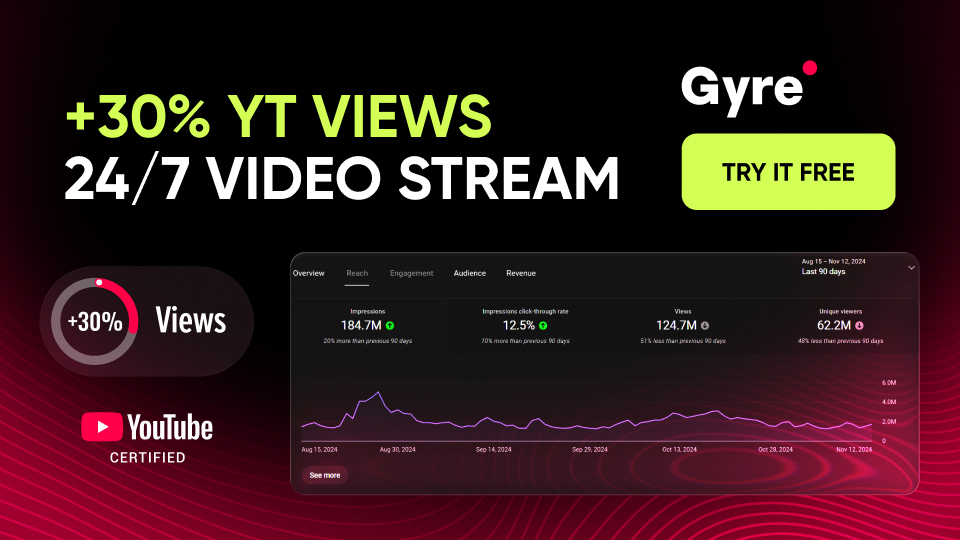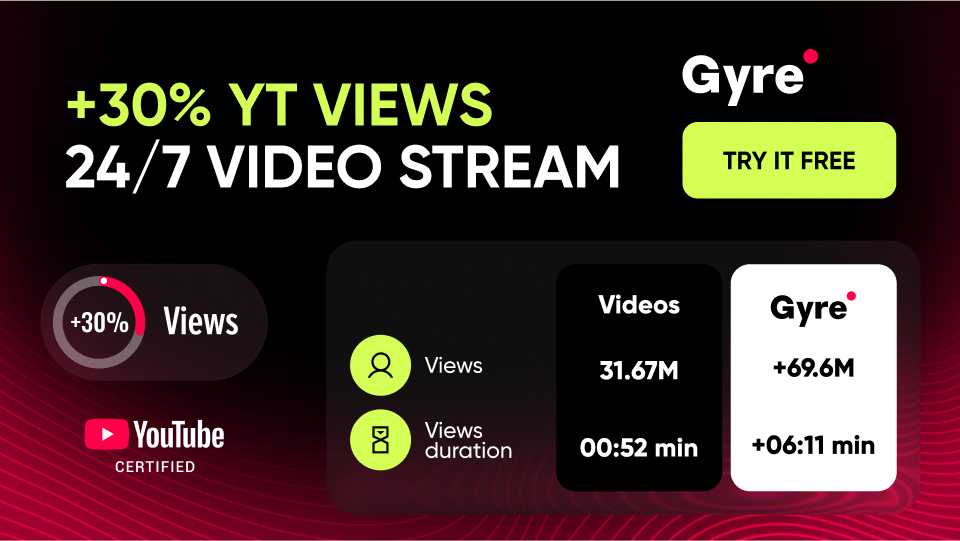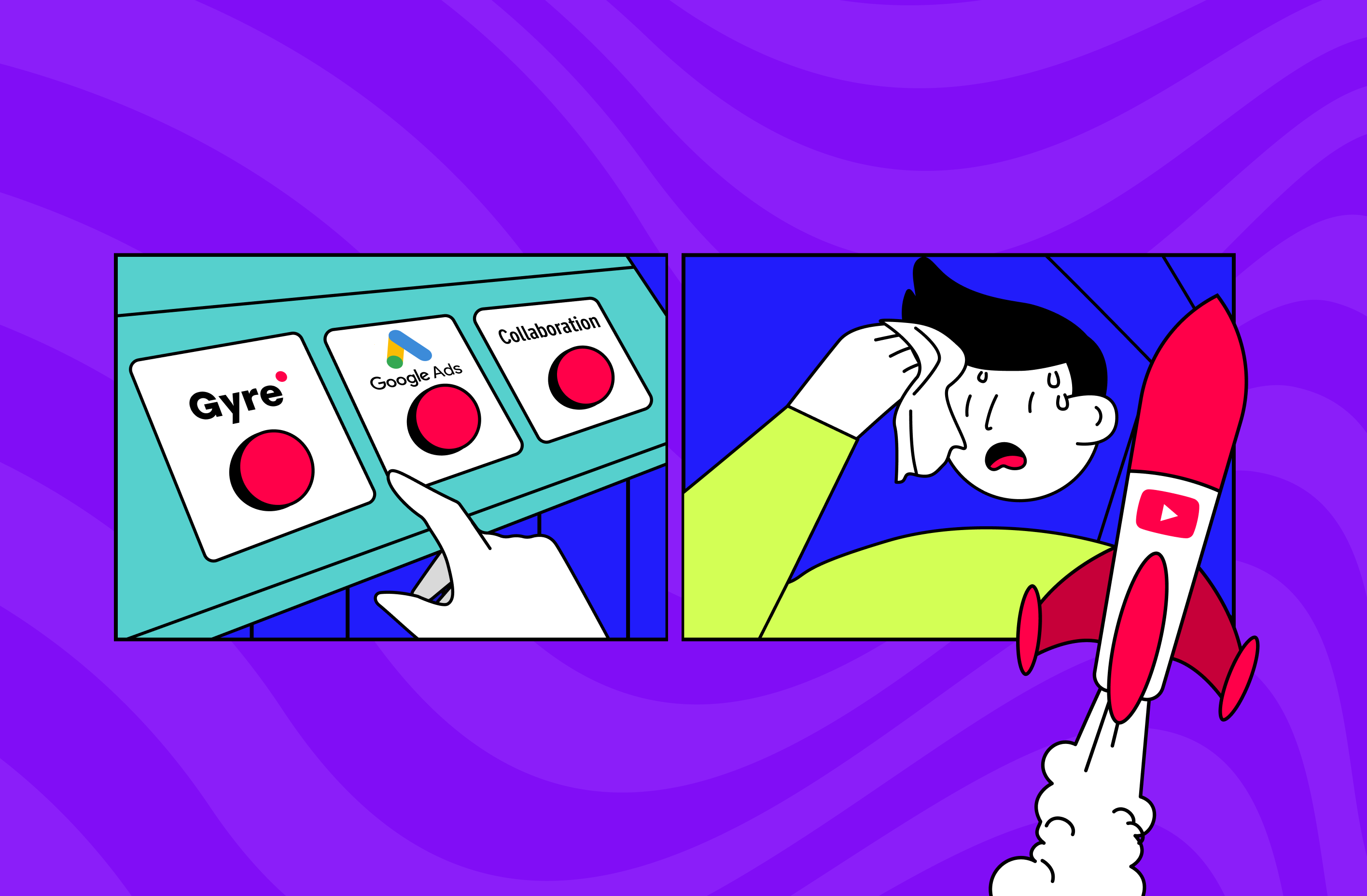As for actual methods for this, as part of your promotional strategy in the digital space, you can provide your future consumers with high-quality media content to fully reveal the potential and capabilities of your product. And since one of the most relevant media formats today is live streaming, you can start with trump cards and apply precisely this approach. We'll talk more about live streams aimed at a product launch below.
Understanding the Power of Live Video
Let's start with why live video content is precious to consumers today. They perceive it as a much more reliable source of information than retouched promotional videos and photos. And this is something you can use to your benefit.
In particular, with the help of live streams, you can demonstrate your products or services without making any special effort to get to the top because most streaming platforms automatically promote this type of media content. For example, they allow you to announce upcoming live events, notifying users of their date and time and, thus, reaching the maximum number of viewers.
Planning Your Live Video Launch
Let's look at the stages of planning a live-streaming process.
- Set your goals. You must clearly understand the purpose of your live stream – whether it is introducing the product to the audience, increasing their involvement, stimulating sales, or something else – this is how you can choose the right approach to your product presentation.
- Determine the target audience. Next, you will need to clearly define who your audience is and what this audience expects from your product. It could be solving certain problems, eliminating pain points, achieving specific desires, etc. To fully understand all these aspects, you will need to collect demographic characteristics (gender, age, social status, geographic location, etc.) and those that relate to your consumers’ intentions and goals.
- Choose the right platform. Depending on the parameters defined in the previous step, you will have to decide on the choice of platform for live streaming (this could be Facebook, Instagram, YouTube, etc.) and their unique features. This applies to both the technical parameters that your recording device must have and the requirements for the video itself, as well as practices that allow you to attract and retain the attention of the average user of a particular platform. You can learn more about choosing a live streaming platform.
Creating Engaging Content
It's time to consider tips to help you create the ideal product presentation content for your live stream.
- Develop a step-by-step script or at least an outline of what you will need to say. No matter how experienced a speaker you are – even if you have the opportunity to trim the video and stitch its parts together into a complete video sequence, it is still better to have some kind of prompter who will coordinate your actions in the frame so that you do not forget anything or, on the contrary, do not say something unnecessary. If you don’t have a live assistant, you can easily replace them with an outline or script – the main thing is that everything doesn’t look like you’re reading from a piece of paper.
- Add interactive elements to your video. If there are third-party websites selling and/or presenting your product, you can organically redirect your viewers there by adding clickable links at the right time. In addition, in some cases, you can use chatbots (in particular, for instant processing of messages from viewers), add promotional codes, provide clickable booking options, and much more.
- Think about your product presentation. Since your main goal is to focus viewers' attention on the features and benefits of the product, you will need to figure out a way to do this without being too “promotional.” In particular, in addition to preparing the marketing text, you can test the capabilities of the product in real time, consider its use cases, etc.
Promoting Your Live Video Event
Are you already on the way to launching your live stream? In this case, it makes sense to think about its marketing, too. Here are just a few ways to promote your stream effectively.
- Create a sense of anticipation for your stream among future viewers. When you already have a live stream planned for a product presentation, you will need to create an announcement for it – for example, using teasers beforehand. This way, your audience will be ready for the upcoming event and will definitely become its participants.
- Use multi-channel marketing techniques. Don't neglect the power of using all available digital channels simultaneously to communicate with your audience – be it social media, email marketing, or something else. Specifically, if you have an account on at least one of the social platforms with an active and constantly growing audience, you can try to “drive” it to the place where the stream will be launched. Thus, you will reach two audiences at once and get more coverage in the first seconds of the stream, which means it will rank better. Moreover, thanks to this approach, you will not only increase the number of views but also prepare your account on the streaming platform for further successful marketing strategies.
- Start reminders and countdowns. Increase the engagement of an already interested audience every minute as the event approaches – regular reminders and a countdown timer will help you with this.
Post-Live Video Strategies
Finally, we suggest you determine your actions after your live stream is completed.
- Active interaction with participants after the event. Once you have completed your live stream, you can begin to process requests and questions submitted by viewers during the viewing. You can also send promotional codes or other offers to all your viewers to bring them closer to making a purchase.
- Analysis of key live stream metrics. You will also need to check your stream analytics to evaluate the critical success indicators of your live video. In the future, this information will help you identify weaknesses in your product presentation strategy and optimize it.
- Content reuse. Now that you have analytics about your previous streams at your fingertips, you can get more value from them. It's about maximizing their duration without having to create new live content. Instead, with the Gyre tool, you can reuse saved streams with top engagement rates and make them continuous. For example, on YouTube, you can effectively redirect your viewers from such streams to new videos and thus achieve high views from the beginning. On top of that, you can also run multiple themed streams simultaneously, both on different streaming platforms or on YouTube only – to maximize your reach or to test the best approach to the product presentation. In particular, in the second case, in each of your live streams, you can consider non-overlapping parameters of your product (for example, in one – visual qualities; in another – functionality and ease of use; in the third – pricing policy, etc.) to understand which ones are most important to your consumers. Ultimately, these methods allow you to catch up with an audience that has not yet been involved in purchases and, using their pains and desires, encourage them to buy your product/service.
Final Thoughts
We hope that we have helped you realize the usefulness of live streaming in product marketing, and now, you have at your fingertips valuable insights that will make your product launch successful. Check the capabilities of the Gyre tool in practice to get the most out of your live videos for your business.







